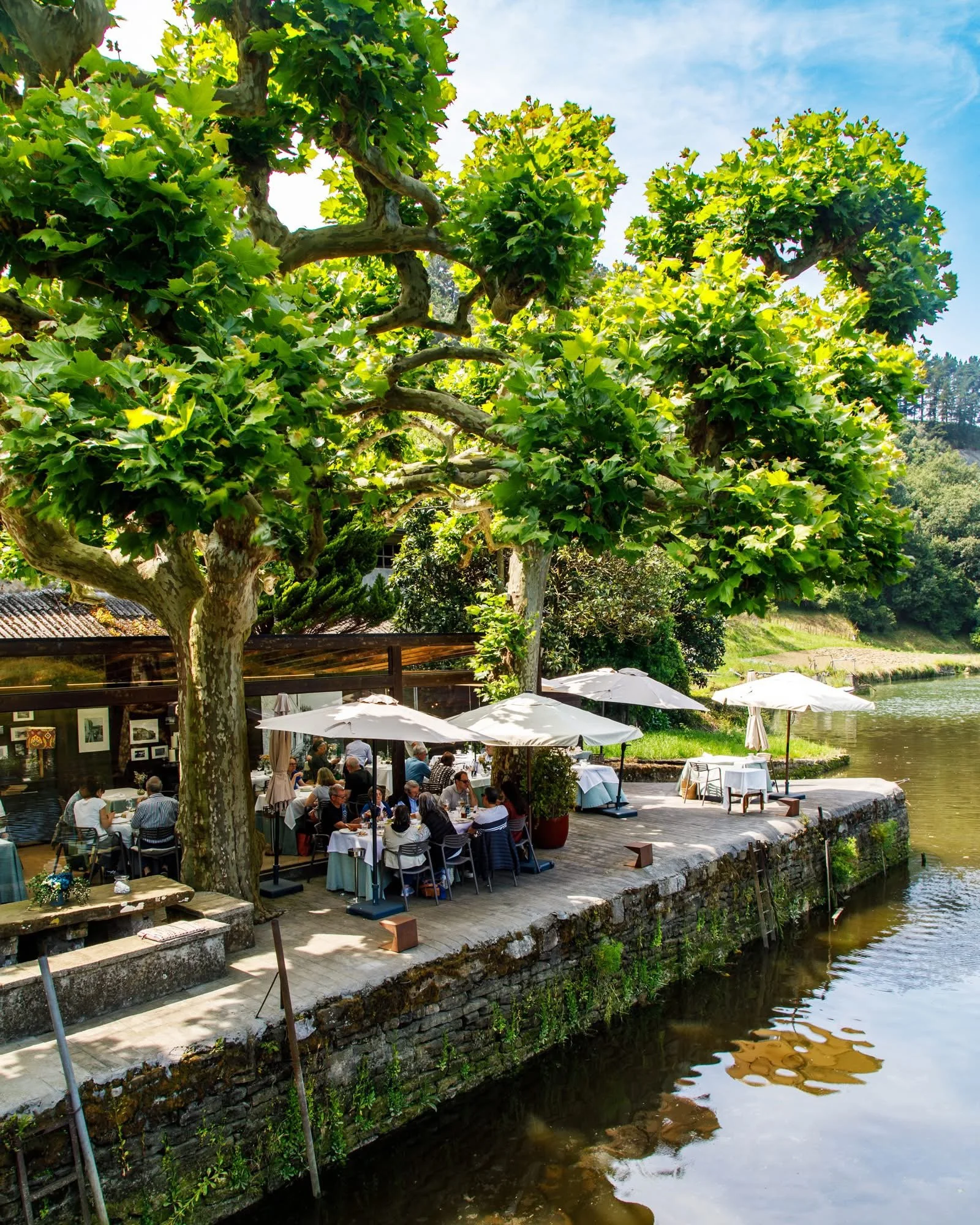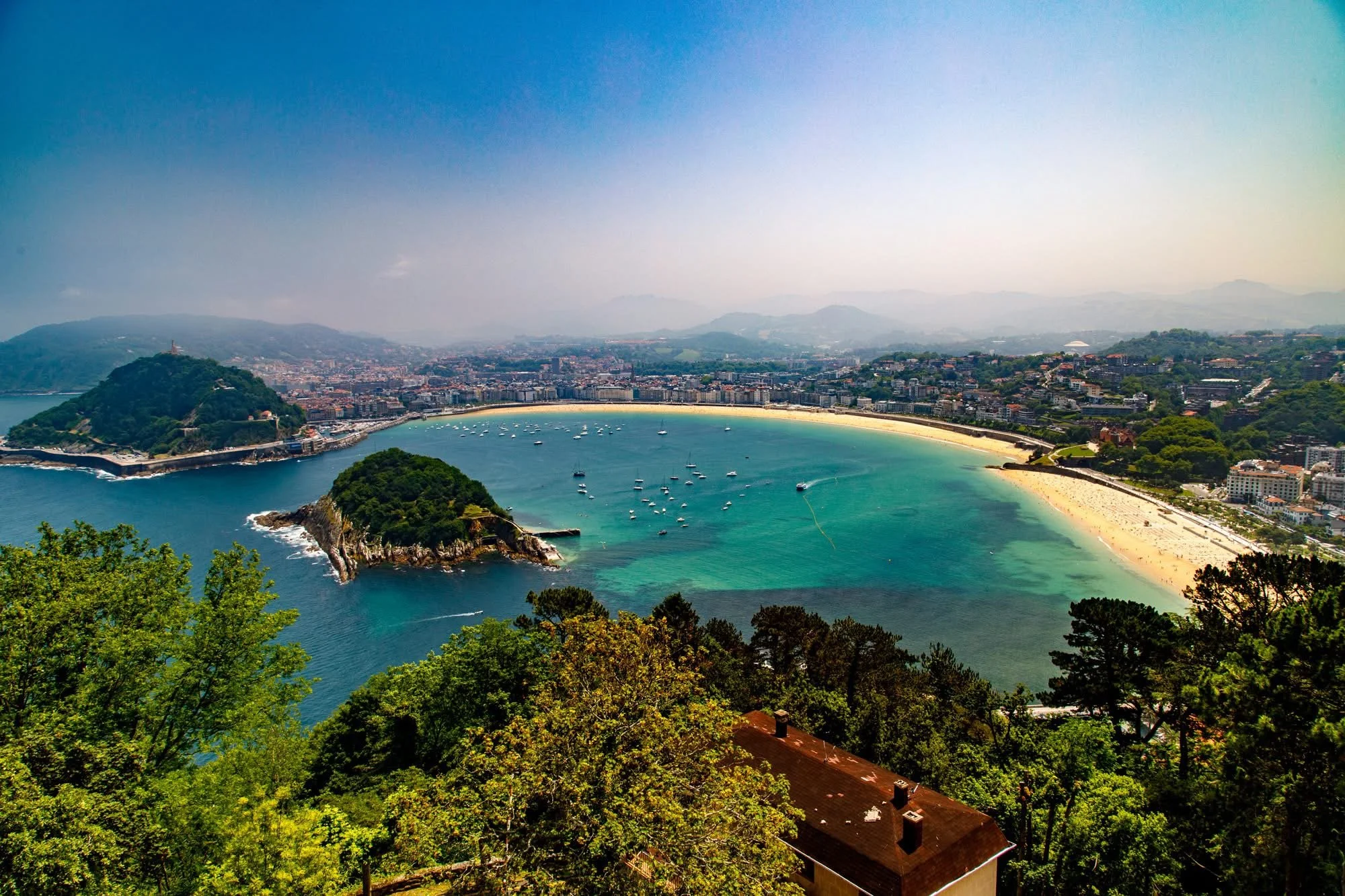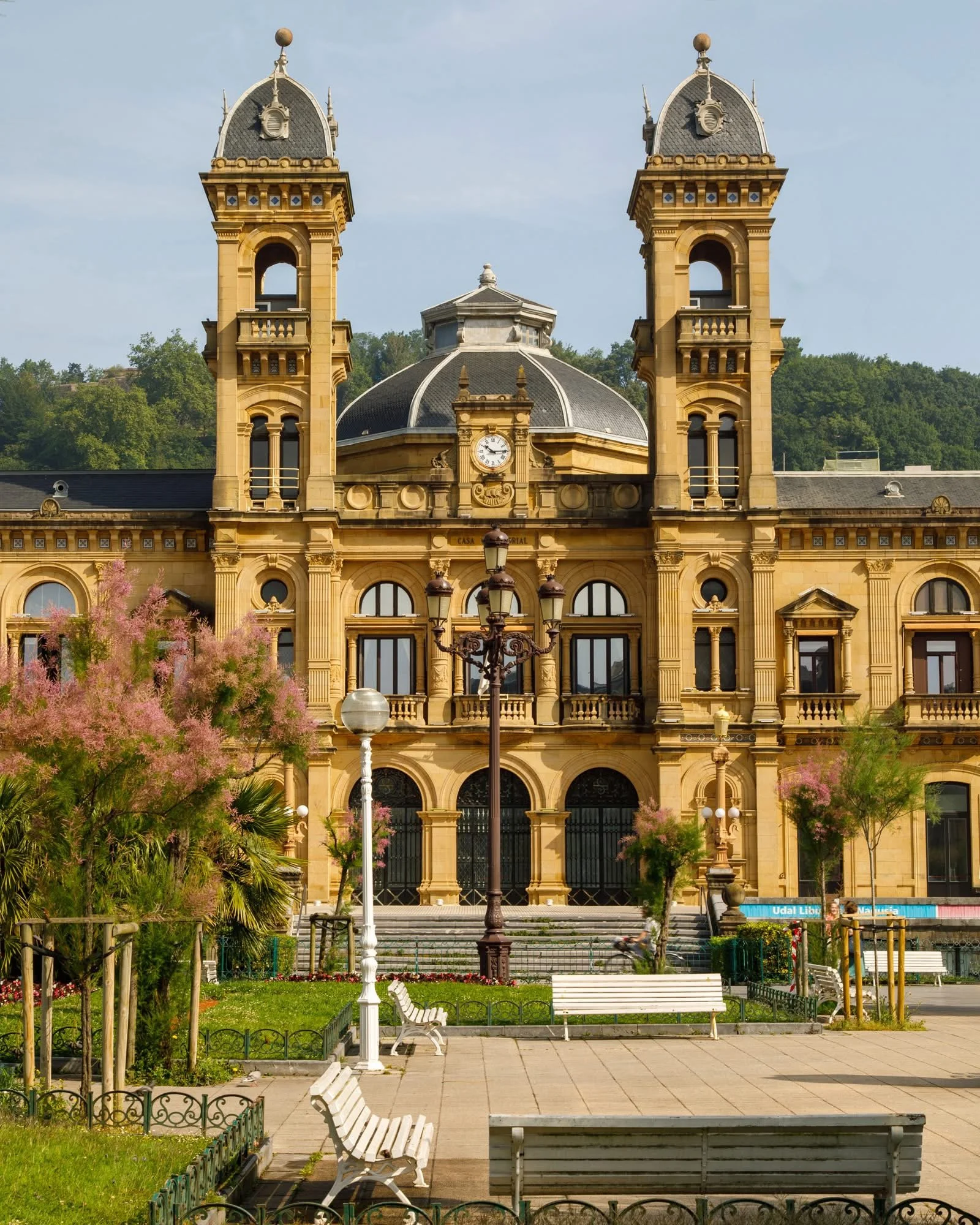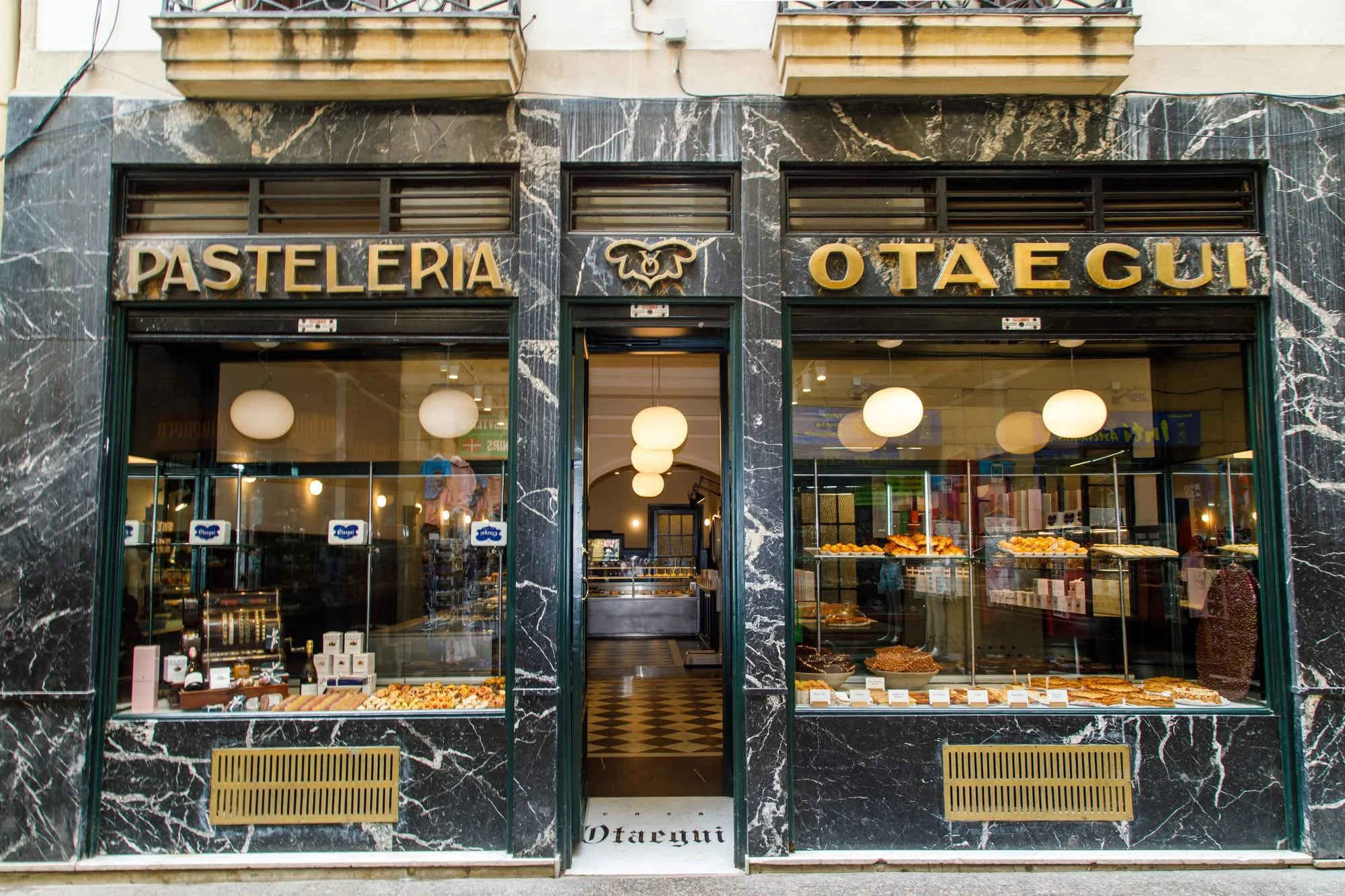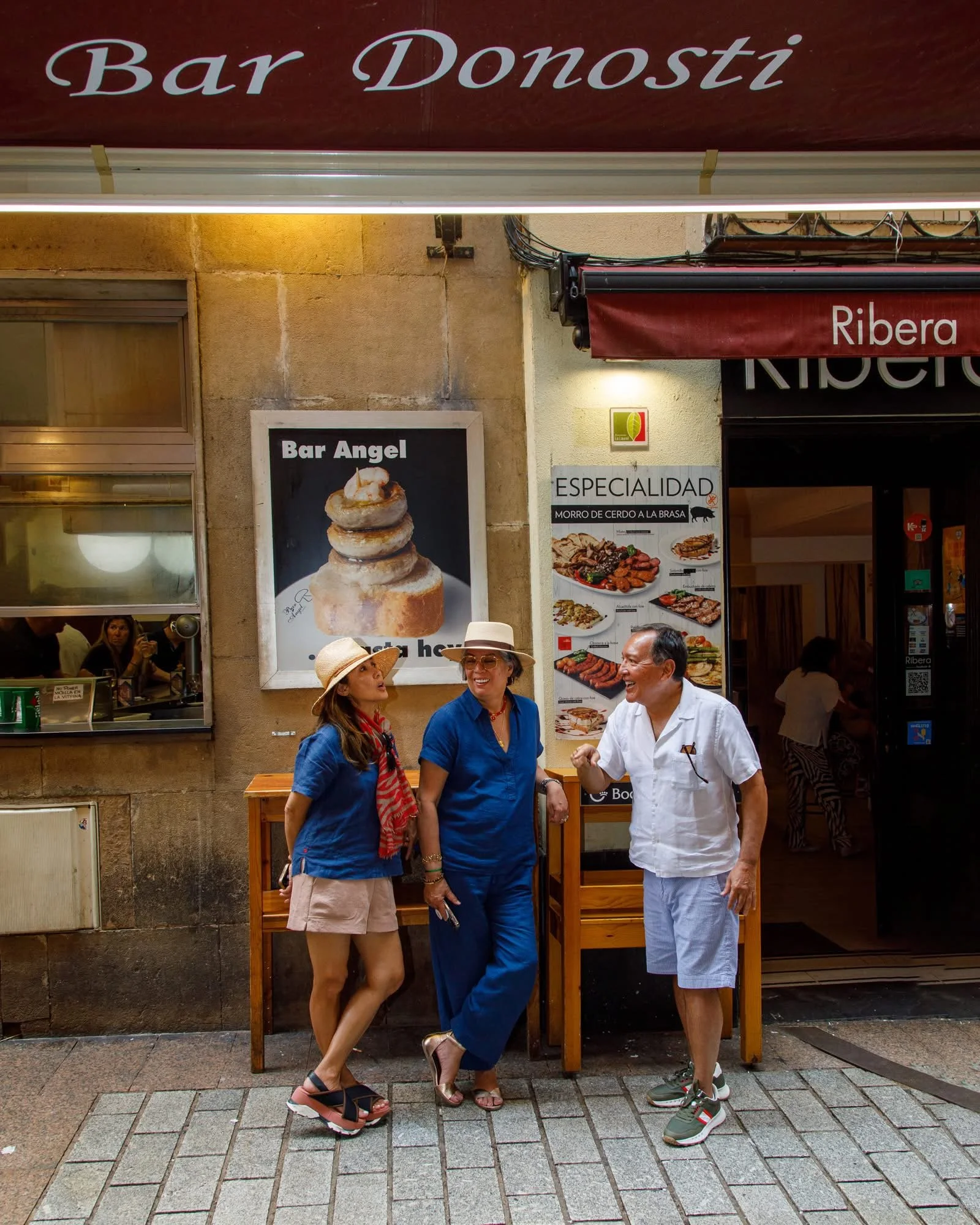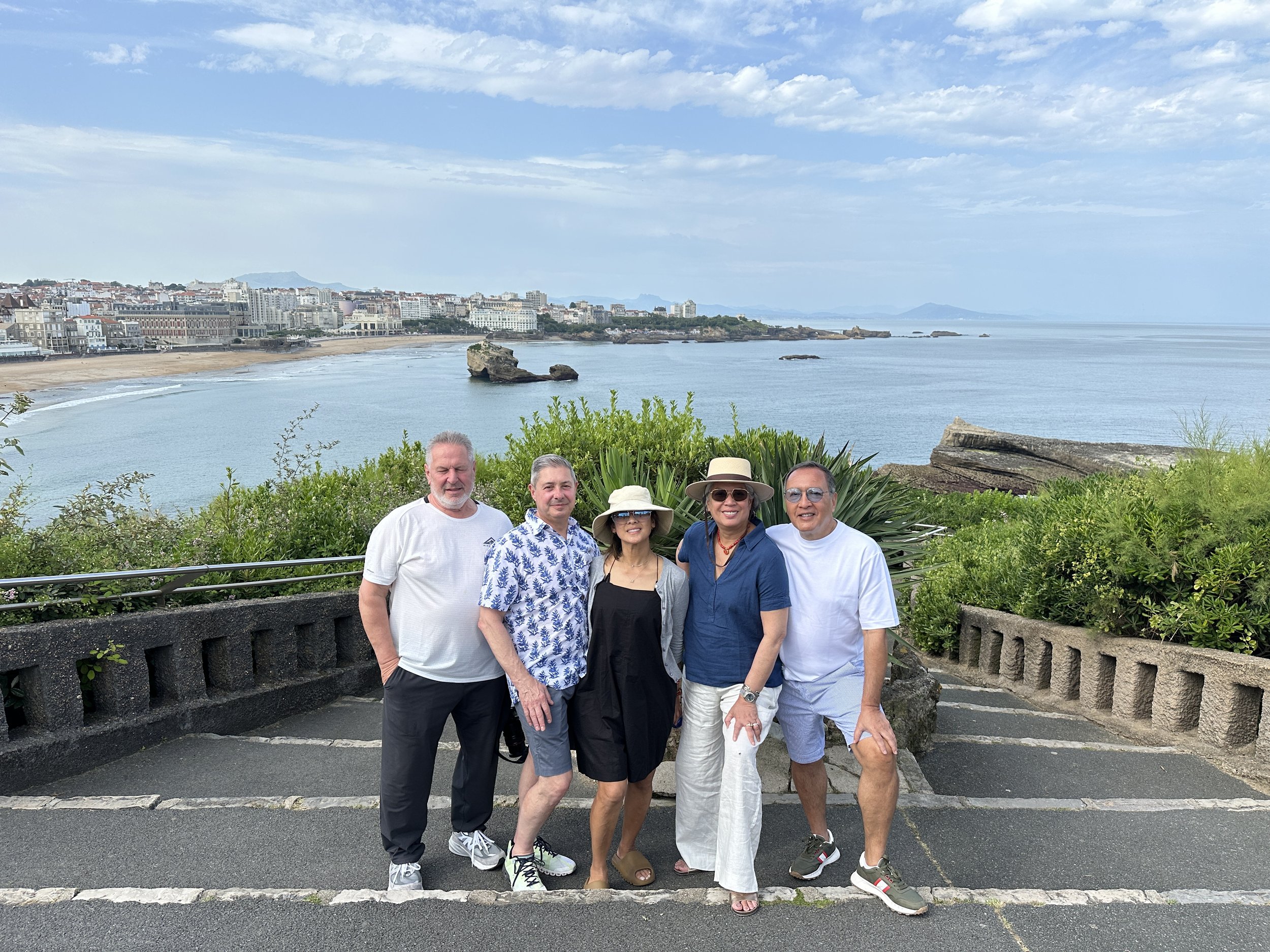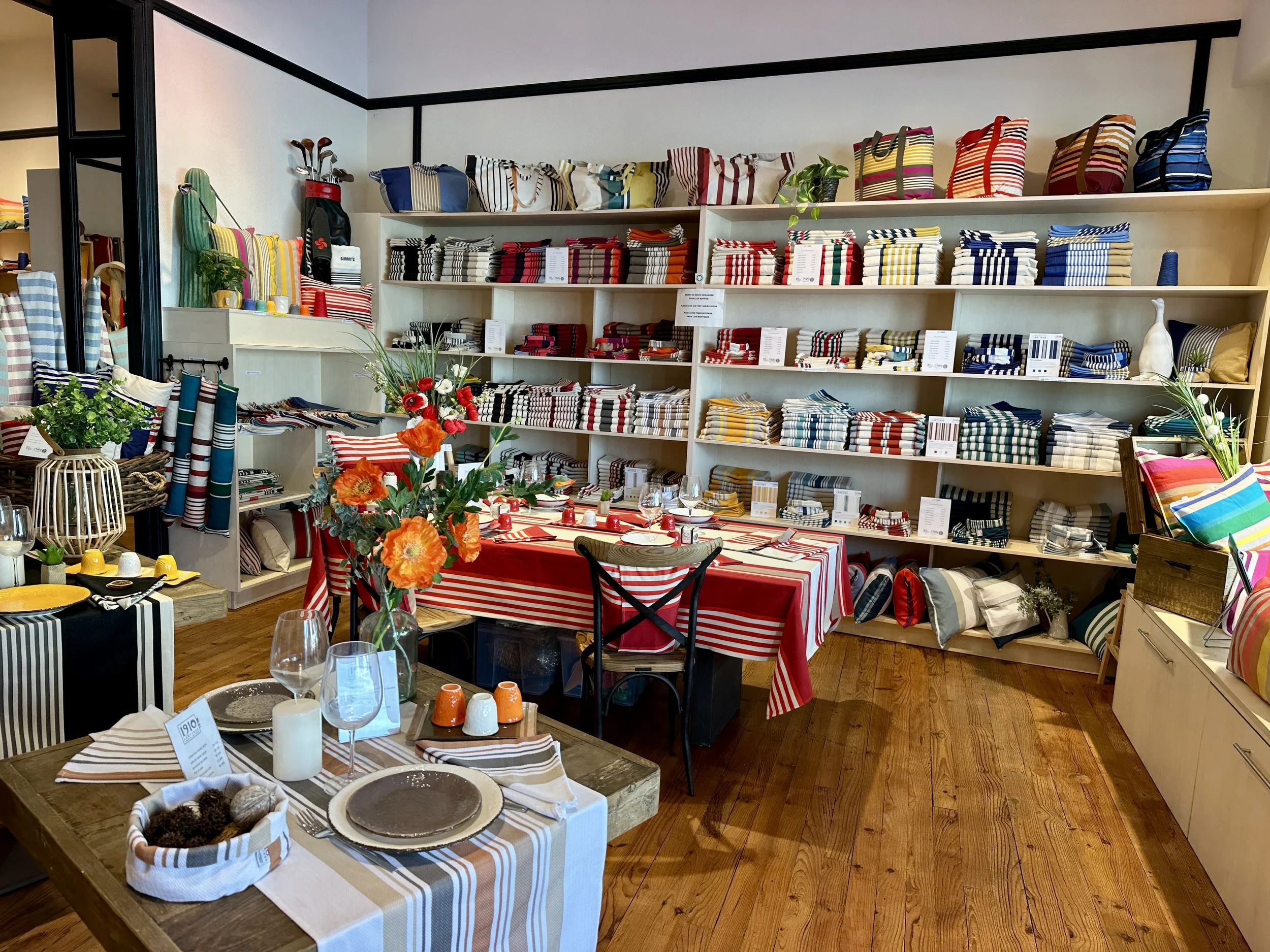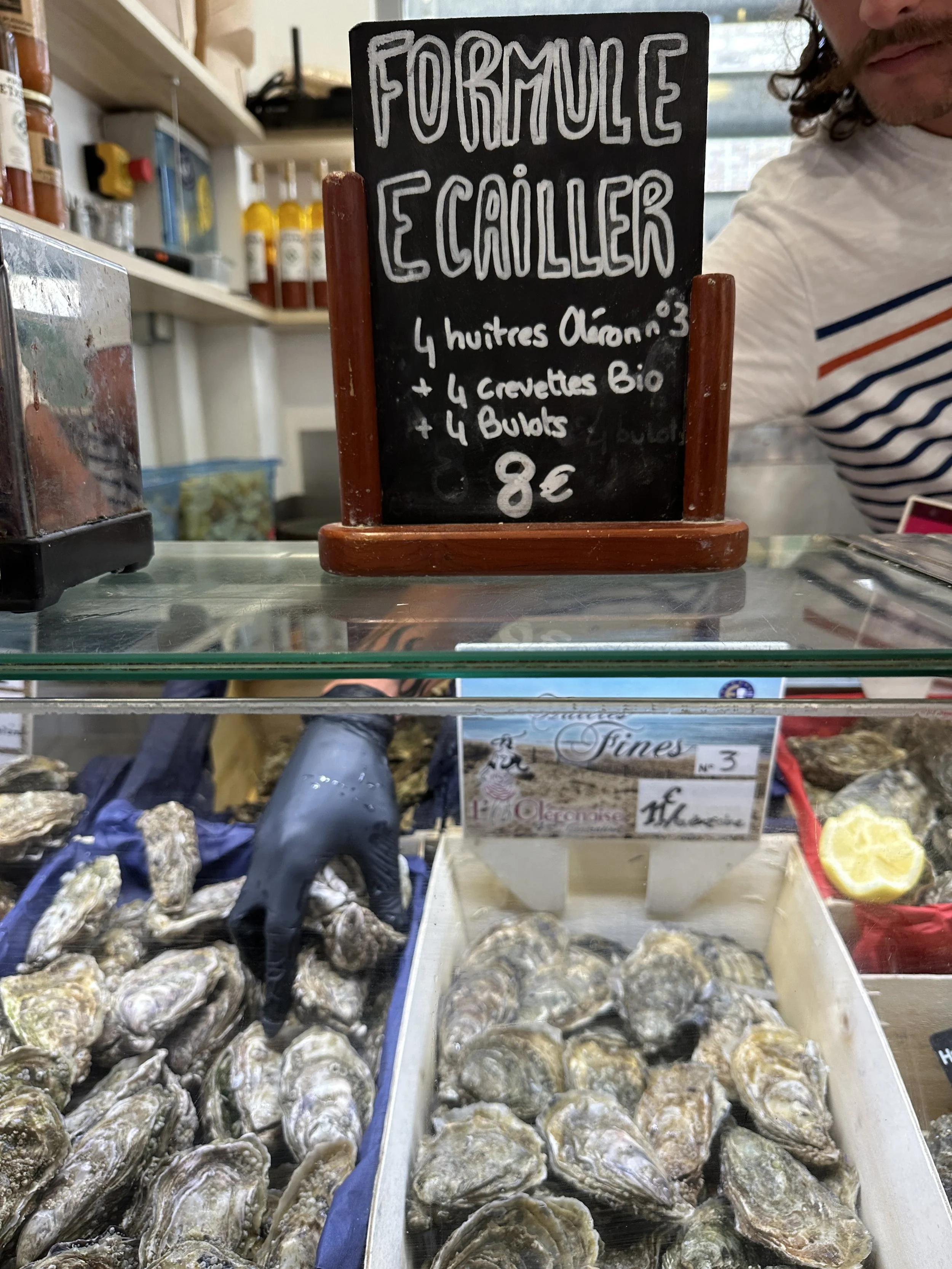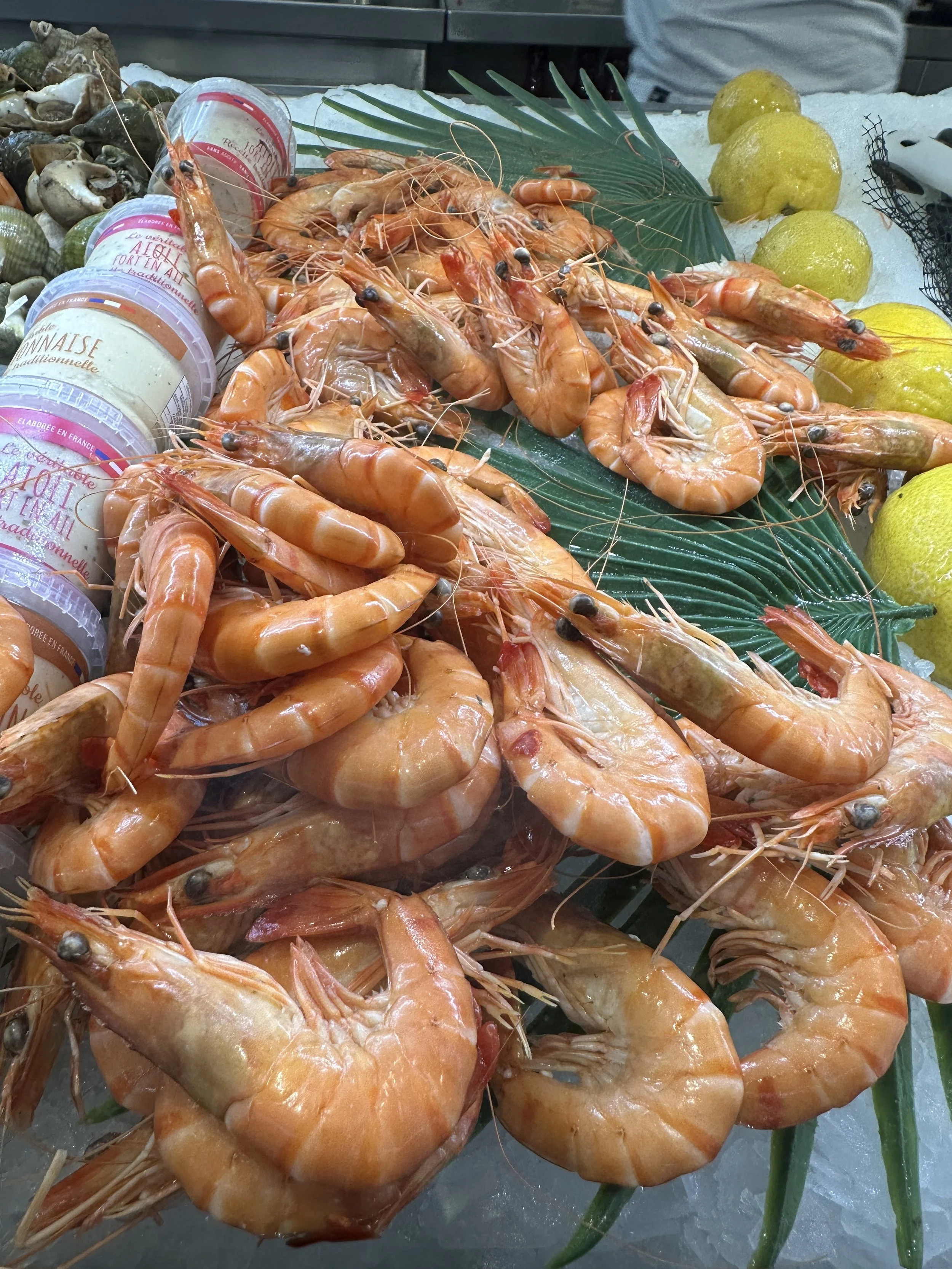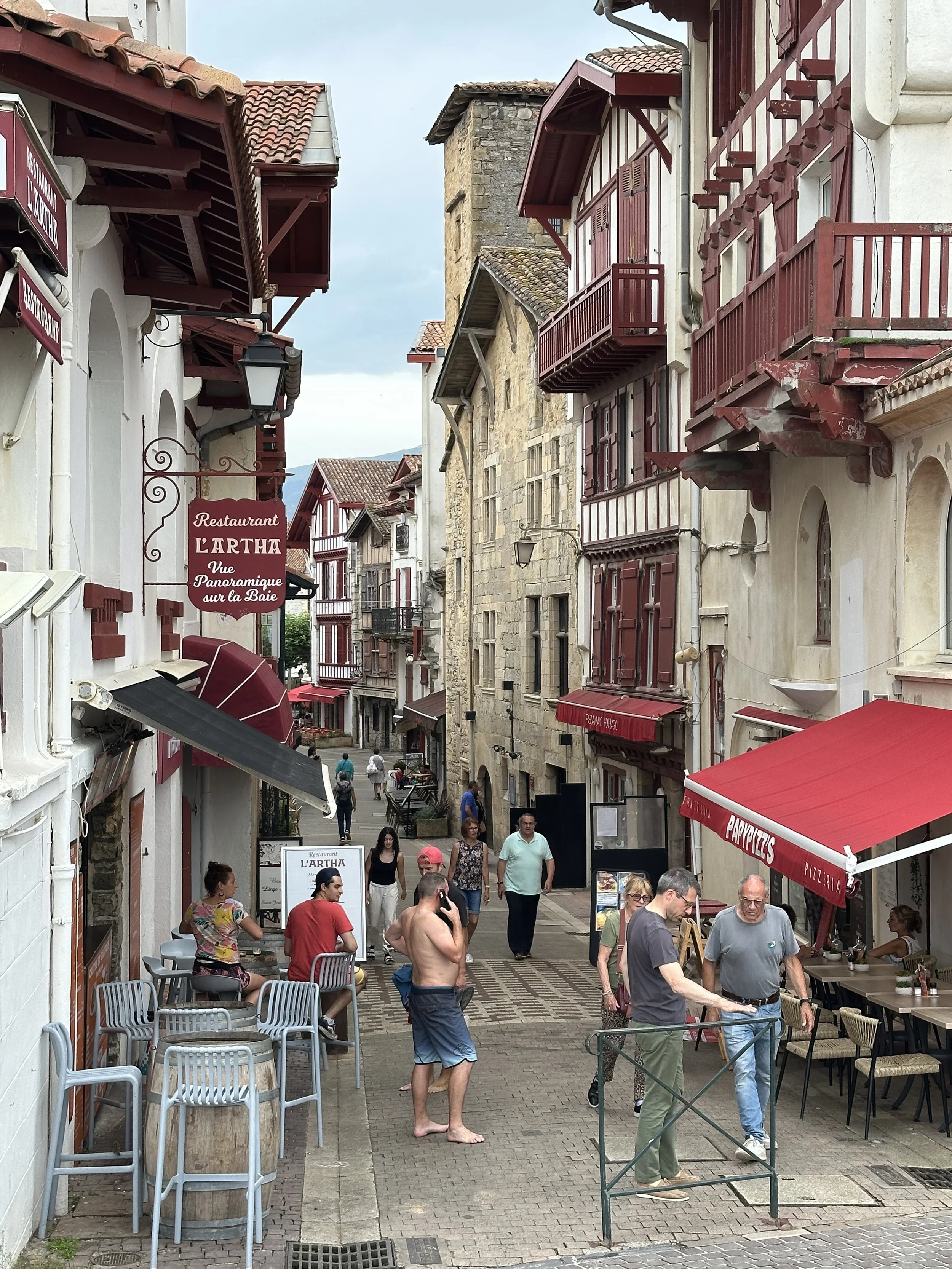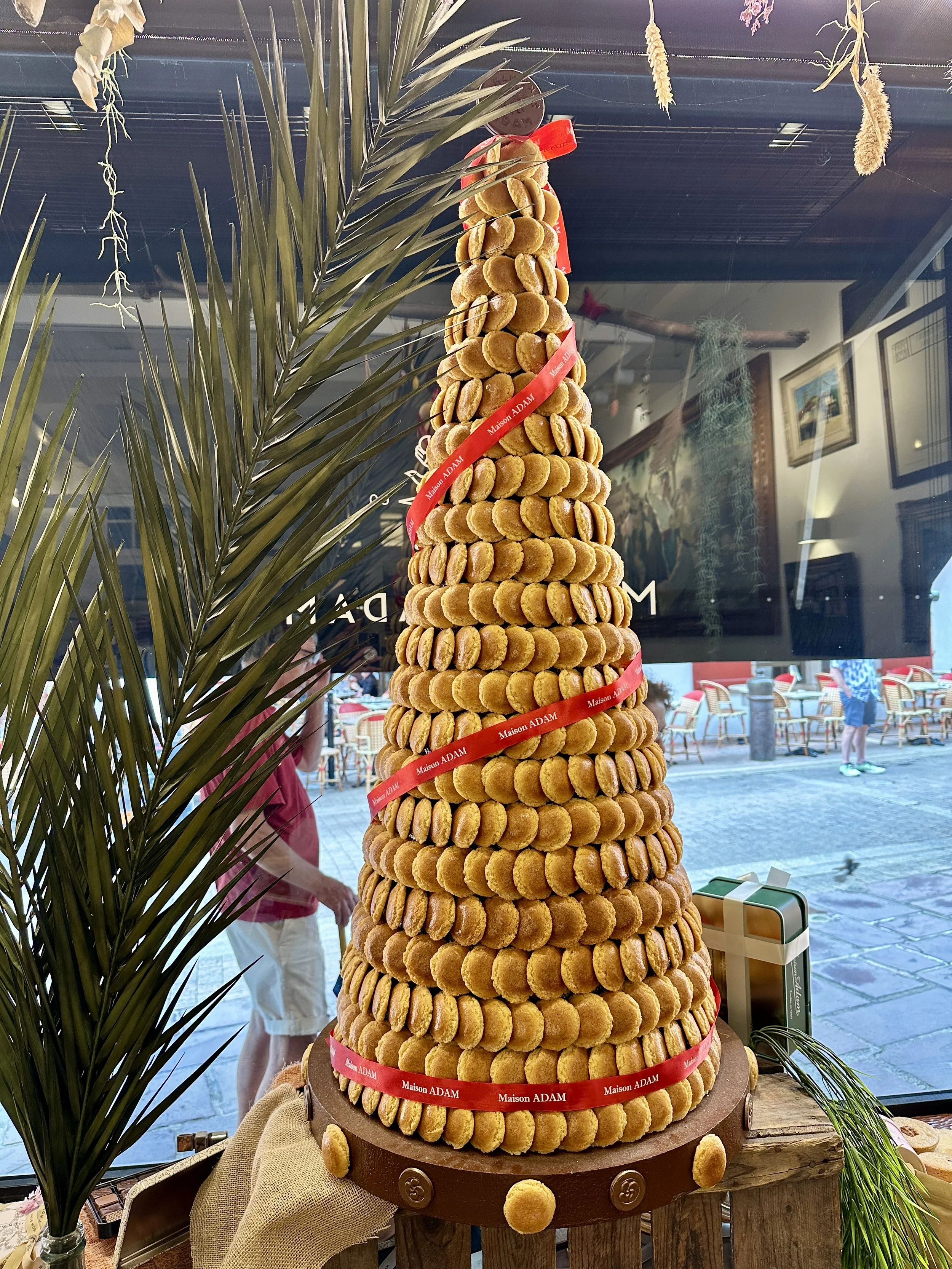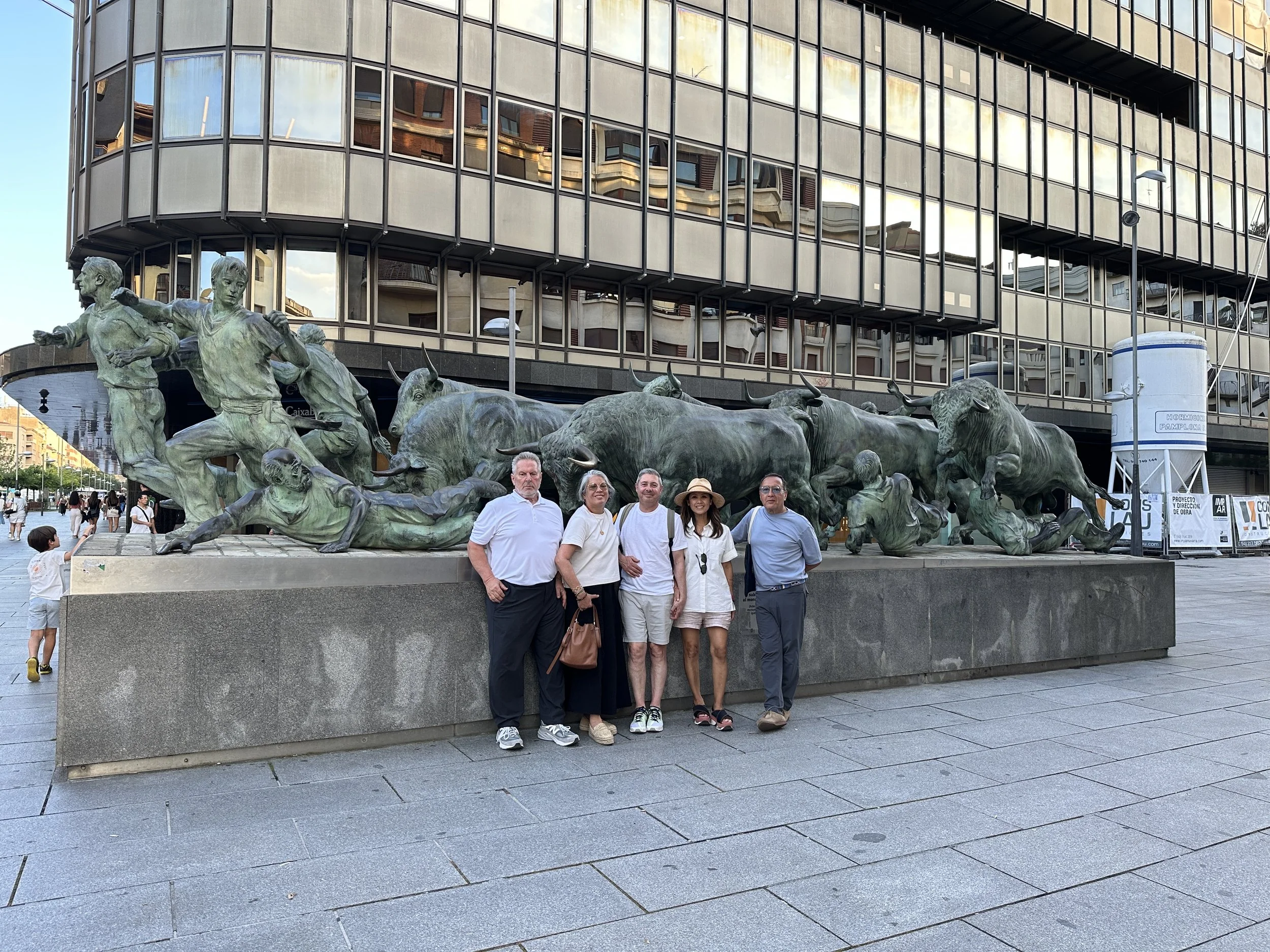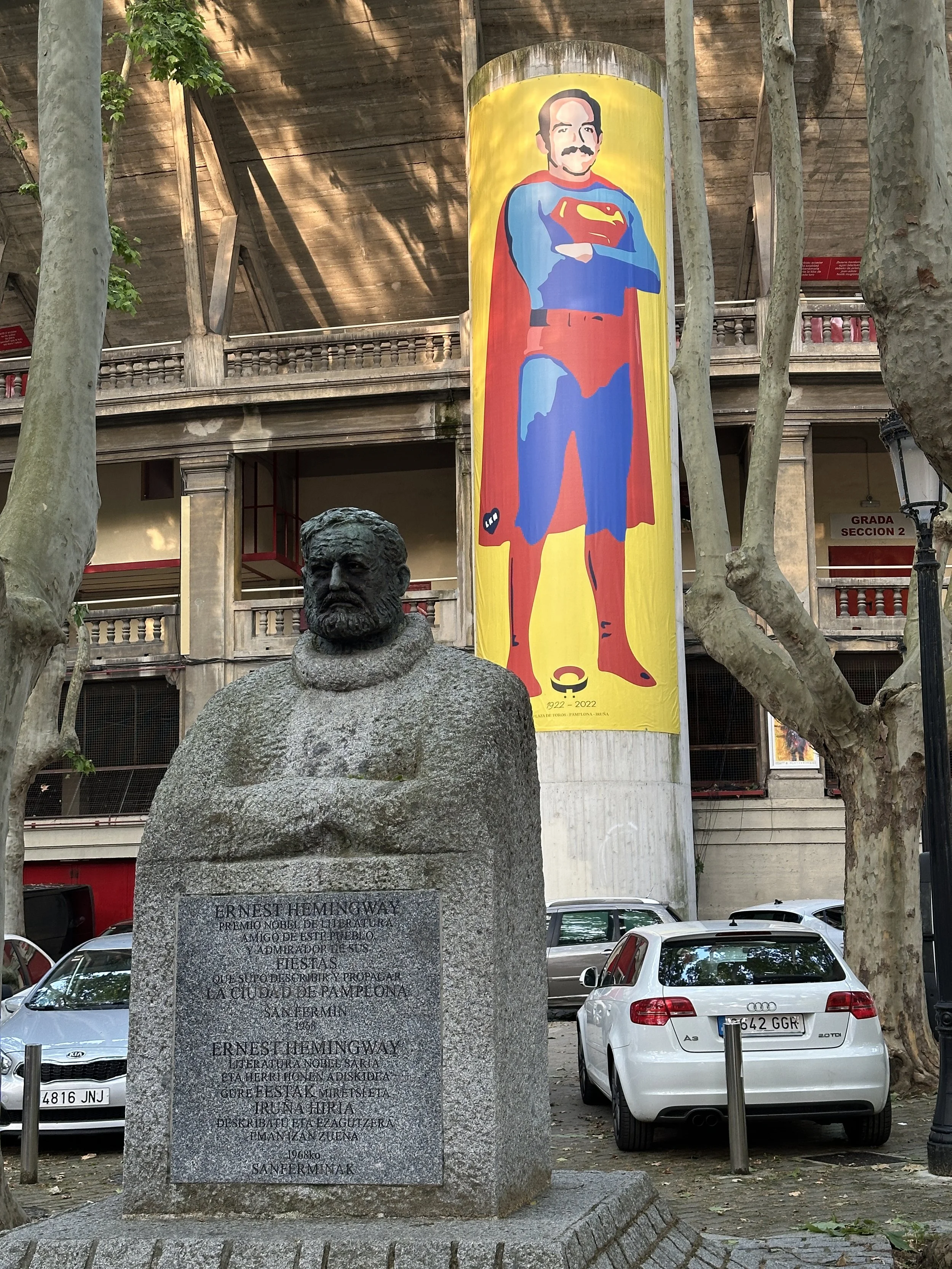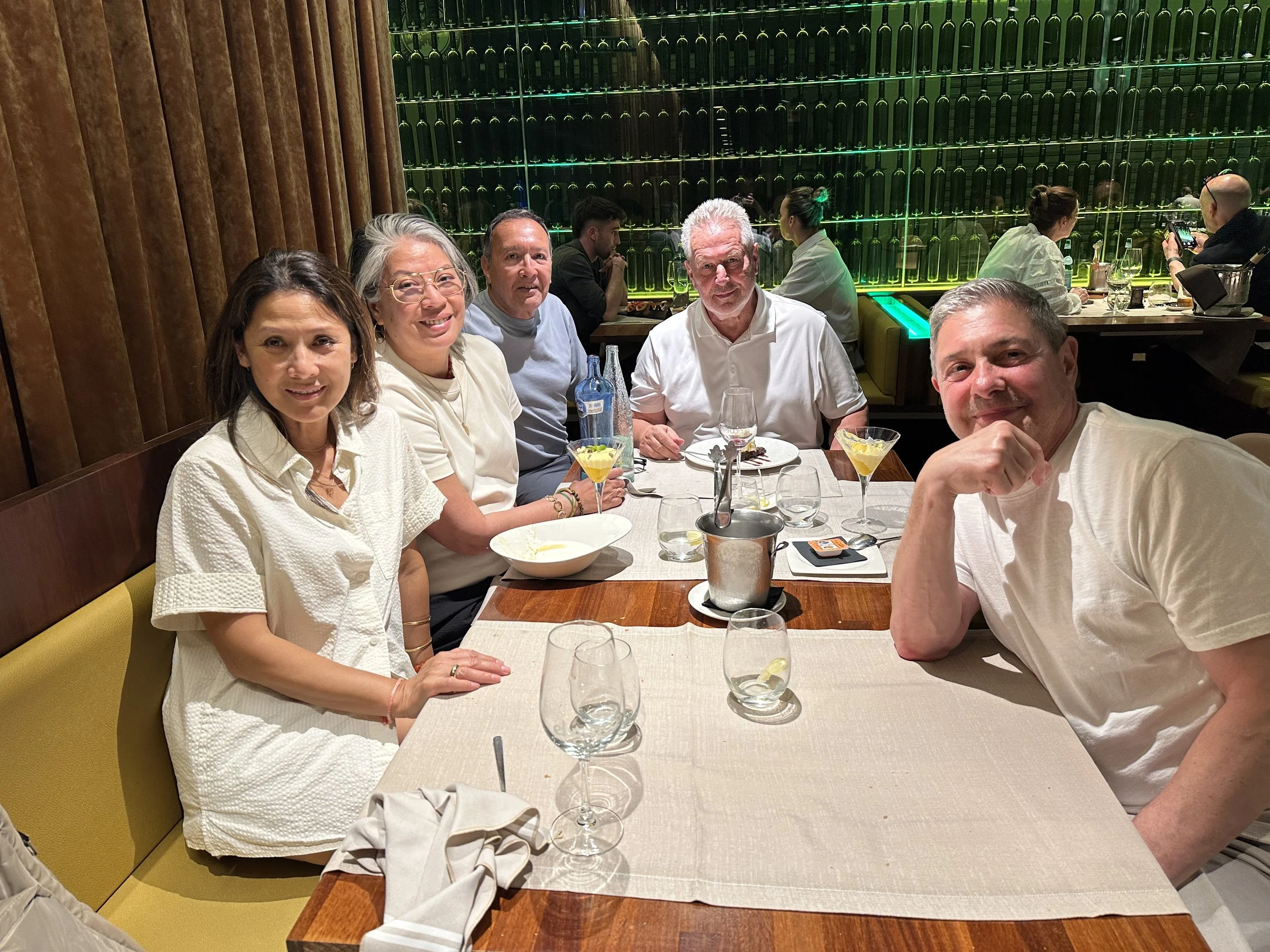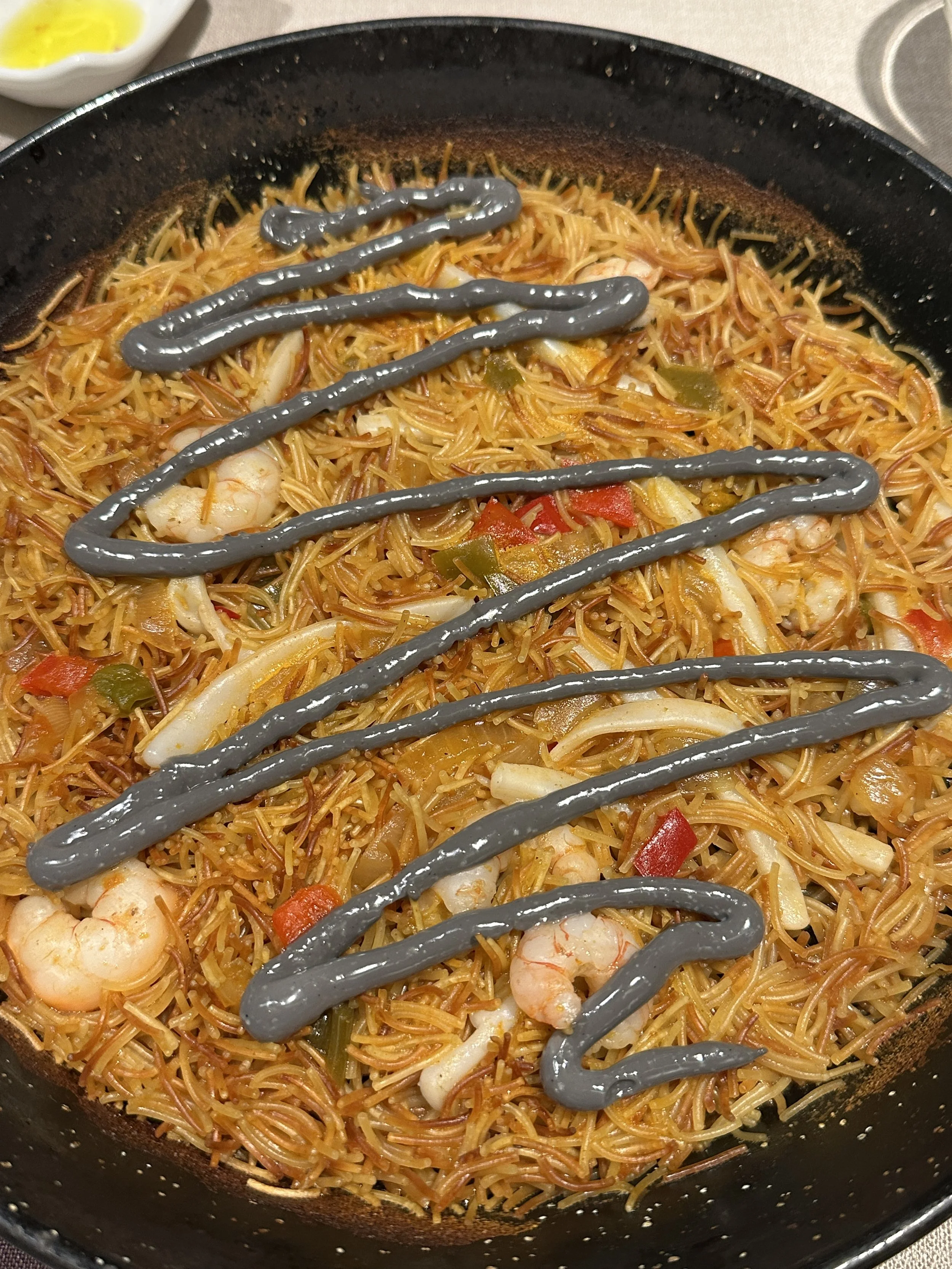A seaside reverie of pintxos, poetry, and pepper-flecked villages
If Bilbao is the industrial phoenix of Northern Spain, then San Sebastián is its siren. Nestled between jade-green hills and the silken curve of La Concha Bay, this city seduces slowly—through sea spray, shimmering light, and a culinary culture so embedded in the soul it feels like ritual.
But before the city reveals itself, a detour.
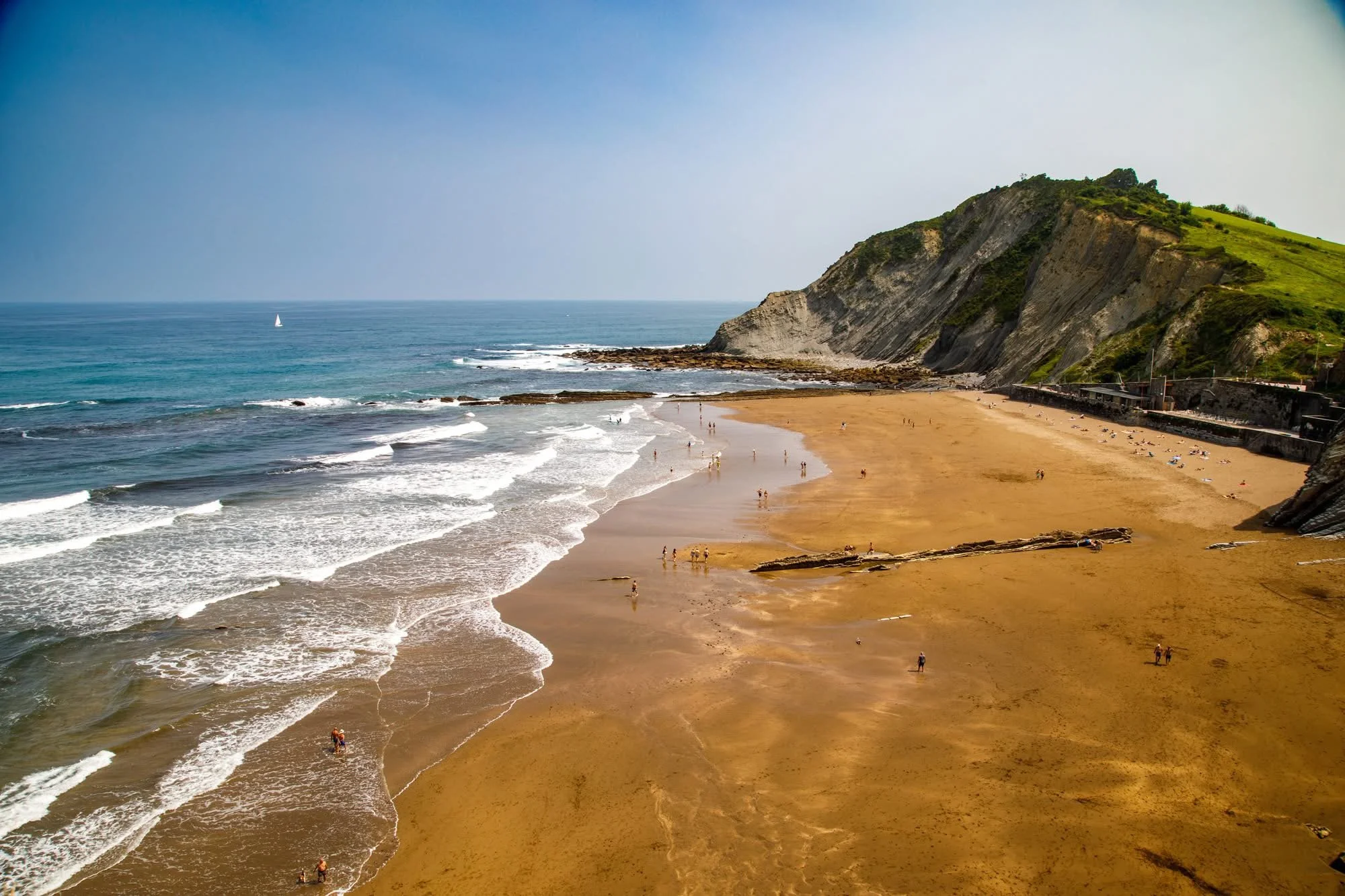


Zumaia
Just west of San Sebastián, the coastal village of Zumaia cradles one of Europe’s most extraordinary geological wonders: the flysch cliffs. Striated like mille-feuille and carved by time, these jagged formations rise from the sea like pages from a stone diary—layers of earth telling stories that date back more than 60 million years.
The best way to experience it? On foot.
We began our walk at Elorrixe, following a peaceful section of the Camino de Santiago. The asphalted trail—gentle and accessible—hugged the green cliffs before arriving at the San Telmo Hermitage, a small white chapel dramatically perched above the Atlantic. It’s one of the most iconic viewpoints on the Basque coast, made even more cinematic by its starring role in Pedro Almodóvar’s Julieta.
By early afternoon, we were ready for lunch at Asador Bedua, a rustic riverside farmhouse nestled in the marshlands of Barrio Oikia. This is not the kind of place you stumble upon—it’s the kind you’re told about, quietly, by those in the know. Their vegetable garden borders the river, and the fish comes straight from nearby waters, grilled whole over an open flame. It arrives flaky, smoky, kissed with olive oil and sea salt. No foam, no fuss—just food that tastes like the land around it.
Asador Bedua, Photo Credit: Michael Girman
Sated and content, we rolled eastward once more, where the hills grew steeper and the sea turned a deeper shade of blue.
San Sebastián
San Sebastián shimmered into view like a watercolor—its belle époque facades glowing gold in the late afternoon sun. The light here does something unusual: it lingers. It clings to buildings, softens edges, and makes everything feel slightly suspended.
Check into the Hotel Maria Cristina if you're after grandeur. This riverside grande dame has hosted royalty, celebrities, and film festival darlings since 1912. For a more contemporary lens, the hilltop Catalonia Donosti offers minimalist elegance in a converted convent, while Lasala Plaza Hotel blends clean design with postcard-perfect views right on the harbor.
SAN SEBASTIAN, Photo Credit: Michael Girman
What to Do
Wander the Parte Vieja, the historic Old Town where pintxo bars hum and every cobblestone seems to tell a story. Chefs here are like poets—balancing anchovy, ibérico, and piquillo in precise, edible verses. Stroll along the boardwalk curving around La Concha Bay and let the rhythm of the waves guide you.
Where to Eat
La Perla is a quintessential spot for lunch, with bay views and breezy dining that feels both elegant and effortless.
Come nightfall, Narru inside Hotel Niza is a favorite. Chef Iñigo Peña brings modern elegance to Basque staples—delicate textures, bold flavors. For something more casual yet inventive, Muxumartin is a local darling. The scallops with green curry and the beef presse sandwich are not to be missed. And then there’s Casa Urola, where wood-fired monkfish and seasonal plates are served without pretension but with deep respect.
La Viña needs no introduction. It’s the birthplace of the burnt Basque cheesecake—the one that launched a thousand imitations. Go for the original. Accept no substitute.
For a true splurge, book a table (and a room) at Akelarre. Pedro Subijana’s three-Michelin-starred temple floats above the Bay of Biscay, its cuisine marrying molecular technique with ancestral soul. I had the pleasure of meeting Oihana Subijana, the maitre d'hôtel and daughter of the chef, who now steers the hotel with warmth and elegance. The hotel, a member of Relais & Châteaux, is a masterclass in Basque materiality—slate, oak, and iron, all locally sourced and impossibly refined.
The French Basque Country
Crossing into France, the air shifts—but only slightly. The rhythm remains, but the bread is crustier, and the croissants more confident.
Begin in Biarritz, the belle of the Basque coast. We shopped for French table linens and espadrilles, ate oysters for breakfast at the market, and bemoaned the lack of shopping time as our husbands waited patiently and in bemusement. The market pulsed with energy—stallholders calling out over piles of espelette sausage, wild strawberries, and wheels of sheep’s cheese.
From there, head down to Saint-Jean-de-Luz, a former corsair port turned seaside darling. Stroll the pedestrian lanes where white shutters and red awnings frame boulangeries and jewel-box boutiques. At Maison Adam, established in 1660, we discovered the original macarons—created for the wedding of Louis XIV, no less. They’re not the pastel confections you might expect, but simpler, chewier, humbler. Barely sweet and utterly divine. The kind of treat that makes you quietly wonder why anyone ever added filling.
End the day in Hondarribia, just back across the Spanish border. This walled fishing town is all steep lanes, creaky balconies, and history worn smooth with time. We walked the same cobbled streets where Steve McQueen filmed scenes for Papillon (1973)—a quiet thrill for those who notice such things. The village holds itself with a kind of cinematic calm, its beauty understated but unmistakable. By sunset, it felt like the only place we wanted to be.
Espelette
A French woman once told me that every kitchen in France has Piment d’Espelette. I believed her. I now sprinkle it like finishing salt—on potato salad, eggs, fish, and meat. The pepper arrived from Mexico in the 17th century and quickly became a culinary guardian: its spicy oils were used to ward off insects and protect jamón in the curing rooms.
In the villages of Ainhoa and Espelette, red peppers dangle like garlands from every window and shopfront. The entire town smells faintly of fire and smoke, as if lunch is always about to happen.
Pamplona
In 1923, Ernest Hemingway arrived in Pamplona and promptly wrote The Sun Also Rises. The city’s fame grew with the bulls—but there is more to it than that brief, frenzied run.
We joined a local guide for a walk through Hemingway’s haunts—Café Iruña, the Plaza del Castillo, the quiet corners where stories were once stirred. We ended the day at El Mercao, a modern restaurant set in the city’s old market hall, where Navarra’s rustic flavors—artichokes, suckling lamb, piquillo peppers—have been stylishly reimagined
Coming Next: Part 3 – La Rioja
Where the hills roll gently, the air smells of oak barrels, and the wine tells its own stories.


